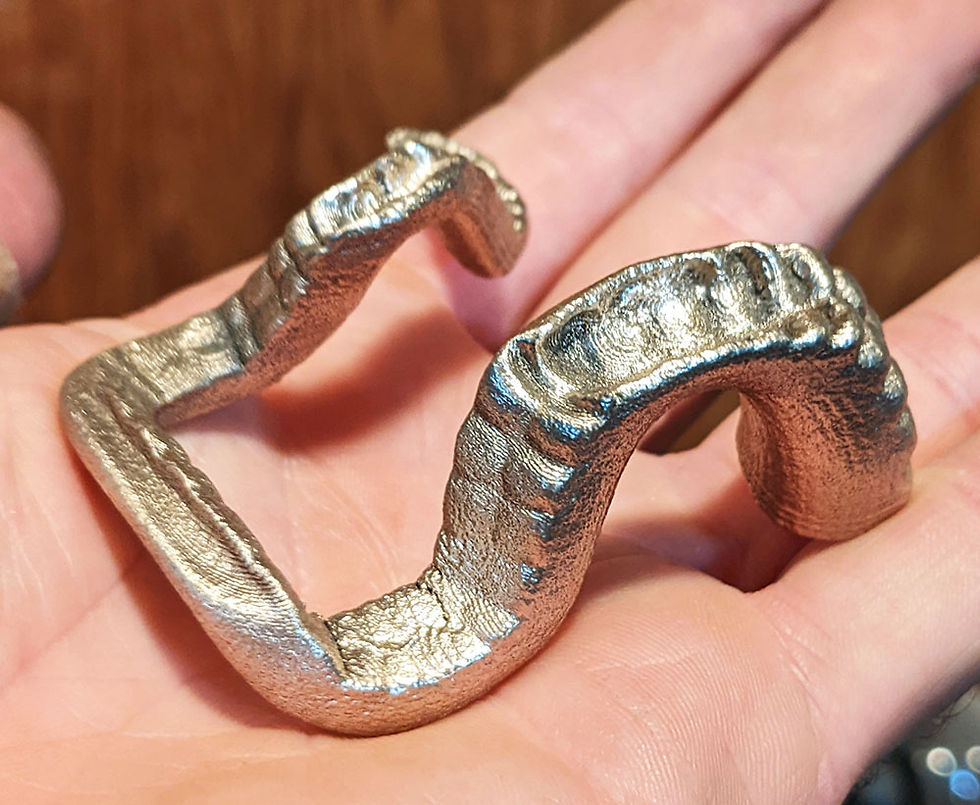3D Printing with Carbon Fiber Nylon Filament (NylonX)
- Gordon LaPlante
- May 4, 2022
- 3 min read

Carbon fiber infused nylon is a strong industrial grade filament that prints fantastically on the gMax 2 PRO 3D printer. Using carbon fiber infused filaments produces a more rigid part that is also less prone to warping. It is recommended to use a hardened steel or stainless steel nozzle due to the abrasive nature of the filament. However, brass nozzles also work well as long as you make sure to or replace the nozzle after every few spools.
Benefits
CF Nylon has several benefits over standard nylon including:
Reduced warping during the printing process
Increased rigidity of final part
Great surface appearance
Generally lighter than standard nylon
Sample Model

Model:
gCreate Generative Design Bracket
Printer:
Slicing Program:
PrusaSlicer 2.4.1
Files:
Found on the SD card files or below:
Paint-On Supports
PrusaSlicer has very useful paint-on support option which makes it easy to put supports exactly where you need them. In this example, select the model then click the Paint-On Support button.
When the dialog opens up you can either manually paint on support, or select entire regions based on an overhang angle.

Once you are done "Painting-on" your supports, make sure to turn off "auto generated" supports in the supports tab.

Slicing Tips:
To get better adhesion with nylon, you may need to increase the "First layer expansion" for support material.
Support material not only supports higher portions of the print but it is also used to "hold down" parts of the print from curling.
Increase the "Top interferance layer" count to make it easier to remove support material.
PrusaSlicer 2.4.1 has "Snug" support style which uses less support material and generates closer to the model.
Nylon is very Hygroscopic

We are using NylonX by Matterhackers for this print.
In general, nylon has a tendency to absorb moisture and this can cause issues during printing. If the filament isn't dried you will hear it crackle as it enters the hot nozzle and boils resulting in a poor surface finish.
It is recommended to dry filament either in your oven or a filament dryer for several hours prior to printing. We used a filament dryer set to 55C for 4-5 hours although longer drying might be required and doesn't harm the filament.

Start Printing on the gMax 2 PRO

The gMax 2 PRO comes with a G10FR4 heated bed which is great for nylon filament. We recommend heating the bed to 70°C-80°C or higher and possibly using extreme hold hairspray to get even better adhesion.
Tip:
Clean the bed using rubbing alcohol or glass cleaner to remove all oil. Any excess oil can cause the filament not to stick.

It is also recommended to use an enclosure to trap in heat and regulate temperature.
Keep an eye on the print to ensure the first layer is sticking and any baby stepping adjustments are made accordingly. CF Nylon had a tendency to warp as it cools so make sure your model is stable and not warping. Drying filament for longer can also help reduce warping.
You can also add corner feet, print with a brim or print on a raft to improve bed adhesion for larger models.

The Results
When the printing is complete, let the bed cool down to room temperature before removing the print. When the bed is cold the print should pop off, or if you used hairspray you may need to use the scraper to gently remove it.


CF Nylon filament has a unique textured surface great for hiding layer lines. You can use an sharp blade and plyers to remove any support material.
If you used "paint-on" supports, you can sometimes "unpaint" supports in certain areas to make removal even easier. If you have large areas of support, try removing a single line across the space so the support is broken up into two regions.


CF Nylon is a great engineering material perfectly suited for the gMax 2 PRO 3d printer. Have fun experimenting with CF Nylon filament and make sure to tag @gCreate3D with your results!







Comments